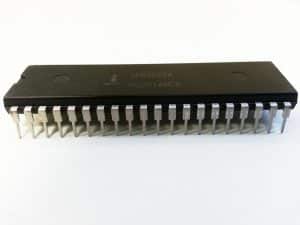Atomic Layer Electronics: 2D Computing
In the ever-evolving world of technology, there has been a constant push towards smaller and more efficient electronic devices. The introduction of atomic layer electronics has opened doors to a new era in computing, with the potential to revolutionize the way we think about and use technology. In this article, we will explore the concept of atomic layer electronics and specifically, 2D computing, and how it has the ability to greatly impact our lives in the near future.
What is Atomic Layer Electronics?
Atomic layer electronics is a relatively new field that deals with creating electronic devices at the atomic layer level. This means that the circuitry and components of these devices are made up of individual atoms, resulting in extremely small and compact devices. This technology has the potential to make electronic devices more powerful, energy efficient, and even wearable.
The Rise of 2D Computing
One area where atomic layer electronics is showing great promise is in 2D computing. Traditionally, computers have been built using silicon-based circuitry, which has limitations in terms of speed, energy consumption, and size. On the other hand, 2D materials such as graphene and molybdenum disulfide have properties that make them promising candidates for atomic layer electronics and 2D computing.
Graphene: The Building Block of 2D Computing
Graphene, a 2D material consisting of a single layer of carbon atoms, is a strong, flexible, and highly conductive material. It has the potential to replace silicon in electronic devices, providing immense benefits in terms of speed, energy efficiency, and size reduction. In fact, graphene transistors have already shown the potential to enable computers to run 100 times faster with significantly less power consumption.
Molybdenum Disulfide: A Game Changer in Computing
Molybdenum disulfide is another 2D material that has been gaining attention in the field of 2D computing. This material has a unique property called the band gap, which makes it possible to create semiconductors, a crucial component in electronic devices. This means that this material has the potential to replace silicon in creating transistors, which can greatly improve the efficiency and speed of computers.
The Benefits of 2D Computing
As we have seen, 2D computing has the potential to bring major advancements in technology. Here are a few key benefits of this emerging field:
Increased Speed
With the use of 2D materials, electronic devices can operate at much higher speeds than with traditional silicon-based circuitry. This is due to the unique electrical properties of these materials, allowing for the creation of faster and more efficient transistors.
Reduced Energy Consumption
By utilizing 2D materials, electronic devices can operate at lower voltages, resulting in significant energy savings. This can have a major impact on reducing our overall energy consumption and positively impact the environment.
Smaller Size and Portability
One of the most exciting aspects of 2D computing is the potential for smaller and even wearable electronic devices. With the miniaturization of circuitry, we can expect to see a whole new generation of devices that can easily fit in the palm of our hands or even be worn as part of our clothing.
The Future of 2D Computing
With the rapid development in the field of atomic layer electronics and 2D computing, it is no surprise that this technology is expected to play a major role in shaping the future of computing. Researchers and companies are continuously pushing the boundaries and exploring ways to utilize 2D materials in various electronic devices. From flexible displays to advanced medical devices, the possibilities are endless.
Conclusion
In conclusion, atomic layer electronics and 2D computing are still in the early stages of development, but the potential they hold is immense. With advancements in this field, we can expect to see electronic devices that are faster, more energy-efficient, and smaller than ever before. The future of 2D computing is exciting and is set to bring major transformations in the tech industry. It is safe to say that we are only at the beginning of a new era of computing, and the possibilities are limitless.







